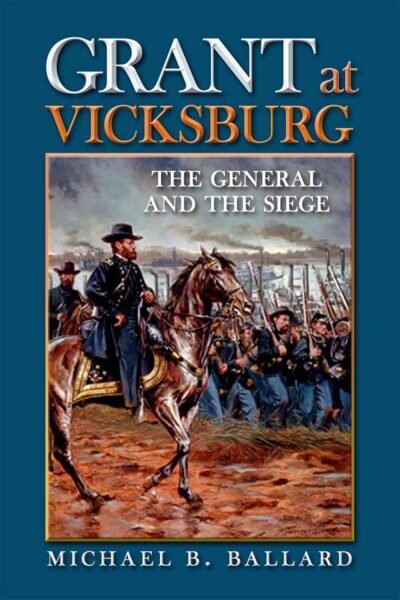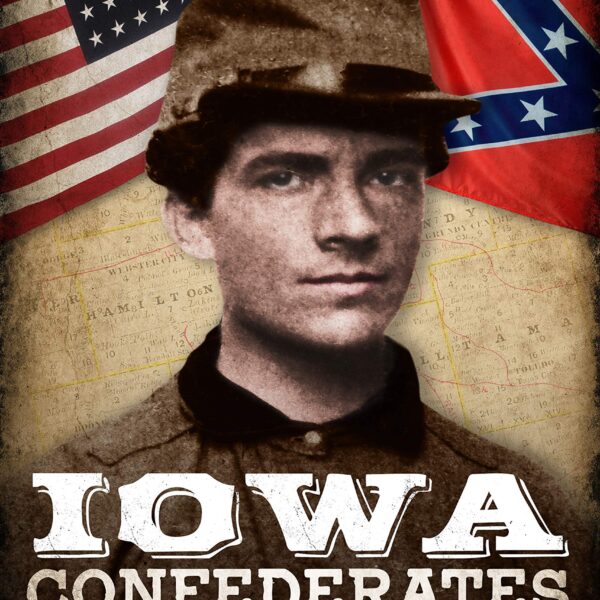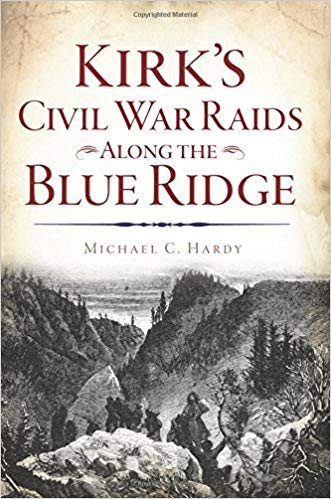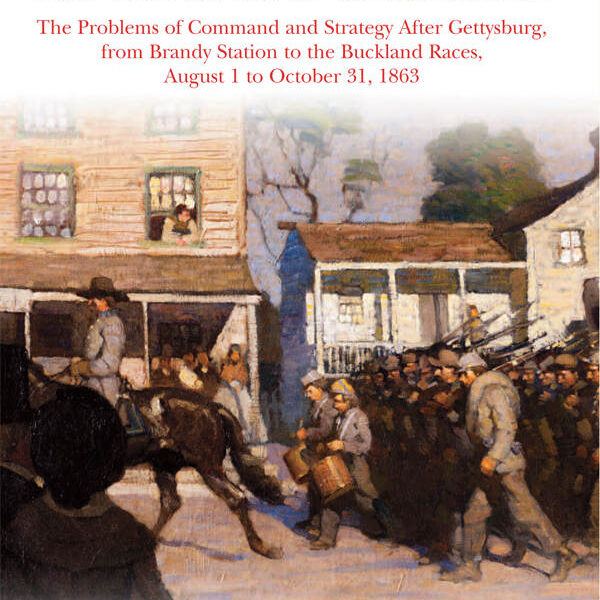The Slave-Trader’s Letter-Book: Charles Lamar, the Wanderer, and Other Tales of the African Slave Trade by Jim Jordan. University of Georgia Press, 2018. Hardcover. ISBN: 978-0-8203-5196-4. $32.95.
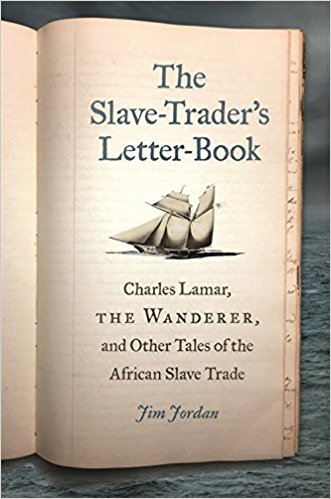 The Slave-Trader’s Letter-Book is much more than the main title indicates. The first 155 pages consist of a biography of Charles Augustus Lafayette Lamar, one of the most notorious American slave traders of the mid-nineteenth century. The final hundred pages contain Lamar’s correspondence, much of which pertains to filibustering in Cuba and the illegal trans-Atlantic slave trade.
The Slave-Trader’s Letter-Book is much more than the main title indicates. The first 155 pages consist of a biography of Charles Augustus Lafayette Lamar, one of the most notorious American slave traders of the mid-nineteenth century. The final hundred pages contain Lamar’s correspondence, much of which pertains to filibustering in Cuba and the illegal trans-Atlantic slave trade.
Charles Lamar’s father, Gazaway Bugg Lamar, was a powerful businessman in antebellum Savannah, but in 1838 tragedy struck his family. While traveling to Baltimore on a commercial steamship he owned, a boiler burst, killing 138 of the 195 passengers and crew. Among the dead were Gazaway’s wife, two sons, three daughters, and a niece. Surviving along with Gazaway were only his sister and son, Charles, who was fourteen years old.
Charles sought to be a successful businessman like his father, but his instincts and judgment were lacking. “The traits that made Gazaway so successful were strangely lacking in his son, despite the father’s attempts to pass them on,” writes Jim Jordan. By the mid-1850s, Charles “was becoming careless at best and reckless at worst” (26).
Looking for ways to advance in the world, Charles got involved in politics and the militia, and in 1854-1855, he became deeply involved in John Quitman’s abortive filibustering campaign to free Cuba from Spain. Gazaway was frustrated that his son did not pay better attention to financial affairs, and Charles made several bad business decisions in the mid-1850s. By 1855 he had entered the domestic slave trade, but even in that generally profitable trade he continued to lose money.
Sometime about 1856 Charles became a vocal proponent for reopening the trans-Atlantic slave trade, which had been illegal since 1808 (and piracy since 1820). As Jordan explains, Lamar “was already involved in the legal, interstate sale of enslaved humans. It made little difference to him whether those blacks came from Africa or another state. Most important, by 1857 Lamar was broke. The slave trade offered the lure of huge profits in a relatively short amount of time, and he needed cash to pay off his mounting debts. The odious commerce seemed like a natural fit for a man of Charles’s character, beliefs, and financial condition” (44-45).
Lamar’s first two slave voyages, with a ship called the Rawlins, ended in disaster for Lamar and his fellow investors. But in 1858, he invested in the luxury yacht Wanderer—a swift vessel that picked up 487 Africans on the Congo River on October 17, 1858. The ship reached the Georgia coast in late November—after having lost seventy-eight captives who died at sea. Lamar thought that he would now strike it rich, but within three months of the landing he found himself in deep legal trouble—his ship seized, the crew under arrest, newspapers reporting sightings of Africans in public, and sales of the “cargo” going poorly. What followed is a rollicking tale of fistfights, jailbreaks, duels, stolen vessels, and a legal system that permitted Lamar and his friends to escape any real punishment for their heinous crimes. In fact, Lamar acted with brazen defiance during the legal proceedings, even plotting other illegal slaving voyages.
During the Civil War, Charles worked with his father to establish a blockade running business. By 1865, however, Gazaway saw the handwriting on the wall and signed an oath of allegiance to the Union. (Gazaway wrote to Abraham Lincoln shortly after taking the oath to protest his treatment by Union military authorities: “I am being treated as an Outlaw, my property is being plundered.”)[1] Disgusted by his father’s disloyal action, Charles wrote privately, “Is father sane? I cannot believe it. . . . He has disgraced the name of Lamar. . . . I would not have taken the oath for all the cotton in the South” (147). Charles joined a military unit to try to defend his native state. He was killed on April 16—a week after Robert E. Lee’s surrender at Appomattox—while trying to rally fellow Confederate soldiers near Columbus, Georgia. His widow would spend the next eighteen years scrimping and saving to pay off the mountain of debt he left her.
Jordan’s depiction of Charles Lamar is different from how past historians have treated him. Don E. Fehrenbacher, for example, portrayed Lamar as “a mixture of shrewd businessman and southern romantic,” while Ronald T. Takaki wrote of “young Lamar’s keen business spirit” (1). More recently, Christopher Dickey described him as one of Savannah’s “most prominent young businessmen.”[2] But account of Lamar as a poor businessman is persuasive, rooted in a thorough grasp of the sources, and delivered with literary skill.
The second section of the book consists of annotated transcriptions of Lamar’s letter books. Portions of these letters were published in the North American Review in 1886; however, their authenticity been doubted by historians. Fortunately the originals were discovered in 2009 in an attic in New Jersey, and Jordan, who purchased them and donated them to the Georgia Historical Society, has reproduced them here with able annotation. The correspondence is a particular boon for historians of the slave trade because of “the paucity of sources left by traffickers.”[3] Taken together, the two halves of The Slave-Trader’s Letter-Book offer a compelling story that would be useful in undergraduate courses on slavery, business history, or the Old South.
Jonathan W. White is associate professor of American Studies at Christopher Newport University and author of Midnight in America: Darkness, Sleep, and Dreams during the Civil War (2017). Visit his website at www.jonathanwhite.org/
[1]G. B. Lamar to Abraham Lincoln, January 27, 1865, Abraham Lincoln Papers, Manuscript Division, Library of Congress, Washington, D.C.
[2]Christopher Dickey, Our Man in Charleston: Britain’s Secret Agent in the Civil War South (New York: Crown, 2015), 99.
[3]John Harris, “Yankee ‘Blackbirding’: The United States and the Illegal Transatlantic Slave Trade, 1850-1867” (Ph.D. diss., Johns Hopkins University, 2017), 14.

